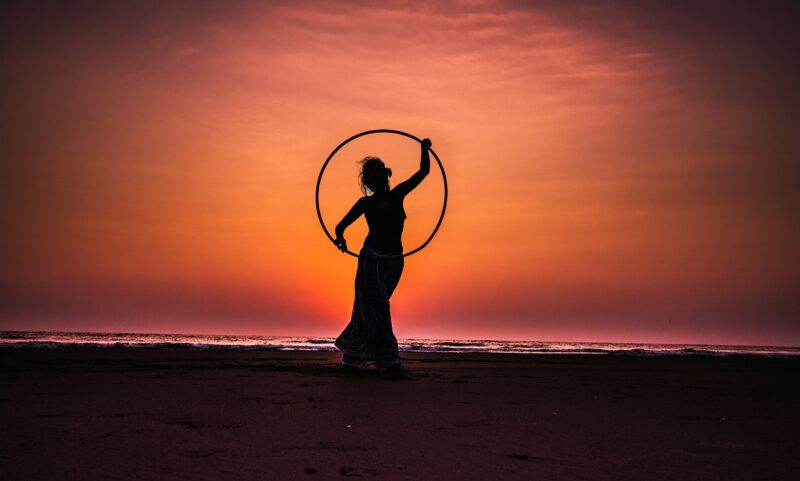When the Hula Hoop Took the World by Storm: A Trend That Defied Gravity
November 15, 2024

In the 1950s, a simple plastic hoop danced its way into the hearts of millions, sparking a cultural phenomenon that transcended age and geography. The hula hoop, often seen swirling around the waists of children at summer fairs and adults in exercise classes, became a symbol of joy, playfulness, and creativity. But what made the hula hoop so irresistible?
1. The Birth of the Hula Hoop
The Hula Hoop traces its roots back to ancient civilizations. History reveals that children in countries like Greece and Egypt played with hoops made from flexible branches or vines. Fast forward to the 20th century, when two Australian entrepreneurs, Richard knerr and Arthur Melin, founded Wham-O, a company that brought the modern hula hoop to the American market in 1958.
The original hula hoop was crafted from lightweight plastic and measured about 36 inches in diameter. It was initially marketed as a toy for children but quickly captured the attention of adults due to its whimsical nature and the nostalgic charm it evoked.
2. A Cultural Sensation
The year 1958 became pivotal for the hula hoop when it was promoted on television and through advertisements. Wham-O’s masterful marketing strategy played a significant role, as they hired musicians and actors to showcase the hoop’s versatility and fun. Shortly after its launch, over 25 million units were sold, and the hula hoop quickly became a household name.
The trend took off like wildfire, with children and adults alike engaging in hula hoop contests and demonstrations. Schools integrated hula hooping into physical education classes, and community centers organized hula hoop clubs. As a playful form of exercise, it encouraged creativity and competition.
3. The Hula Hoop Goes Global
The hula hoop’s global journey began soon after it took America by storm. Countries around the world embraced this plastic circle of joy, and variations of the hoop began to emerge. In Japan, for example, hooping became synonymous with exercise, while Latin America billed it as a dance tool.
Hula hooping culture evolved further when performance artists incorporated it into their acts, showcasing advanced techniques and tricks that wowed audiences. The artistry associated with hula hooping attracted dancers, circus performers, and musicians, transforming it from a simple toy into an art form.
Indeed, the hula hoop gave rise to a thriving community largely driven by social interaction, creativity, and mutual support. Festivals around the world began featuring hula hoop competitions, and hoopers decorated their hoops with colorful patterns, giving each one a personal touch.
4. The Science Behind the Fun
While the hula hoop may seem like merely a source of entertainment, there’s fascinating science behind the spinning motion. To maintain the hoop’s orbit, a performer must harness physics principles, including angular momentum and centripetal force. Essentially, the hula hoop becomes a tool for enhancing physical coordination and balance.
Engaging with a hula hoop activates core muscles, improves coordination, and enhances cardiovascular endurance. It provides an excellent workout while being incredibly fun, thus attracting various fitness enthusiasts seeking invigorating alternatives to traditional exercise routines.
As a result, fitness trainers began incorporating hula hoops into workout programs during the 2000s. From weight loss classes to specialized therapeutic sessions, hooping emerged as a versatile and effective fitness trend.
5. The Hula Hoop Today
Despite the ebbs and flows of cultural fads, the hula hoop has managed to stand the test of time. Today, it resonates with multiple generations — from children to fitness gurus, performance artists, and casual hoopers. You can still find hula hoops being enjoyed at various festivals, fitness classes, and casual gatherings.
With the newest wave of interest in hula hooping, a diverse array of hoops is available, from weighted hoops designed for fitness to LED-lit hoops used for mesmerizing performances at night events. Craft communities have also sprung up to create custom hoops, combining advanced materials with vibrant designs.
Online platforms have further fueled the hula hoop’s resurgence, where enthusiasts share tricks, tutorials, and personal stories, broadening the community of hoop lovers.
Conclusion
The hula hoop, in all its colorful glory, remains a testament to the power of play and creativity. Its historical background, cultural impact, scientific benefits, and continued modern relevance showcase that joy and movement can exist in harmony. Hula hooping is more than just a whimsical pastime; it’s a manifestation of human spirit, connecting people through tradition, movement, and art. As we swing our hips and spin our hoops, we embrace a trend that truly defied gravity and continues to inspire.
Let’s keep the playful spirit alive — grab a hoop, swirl, twirl, and dance!







